Acer Chromebook Vero 514 review: A fast, robust and eco-friendly notebook with a poor screen
Solid design and ergonomics alongside a keen price and good eco credentials, the Acer Chromebook Vero 514 is not ideal if you want a great screen or a slim, light rig
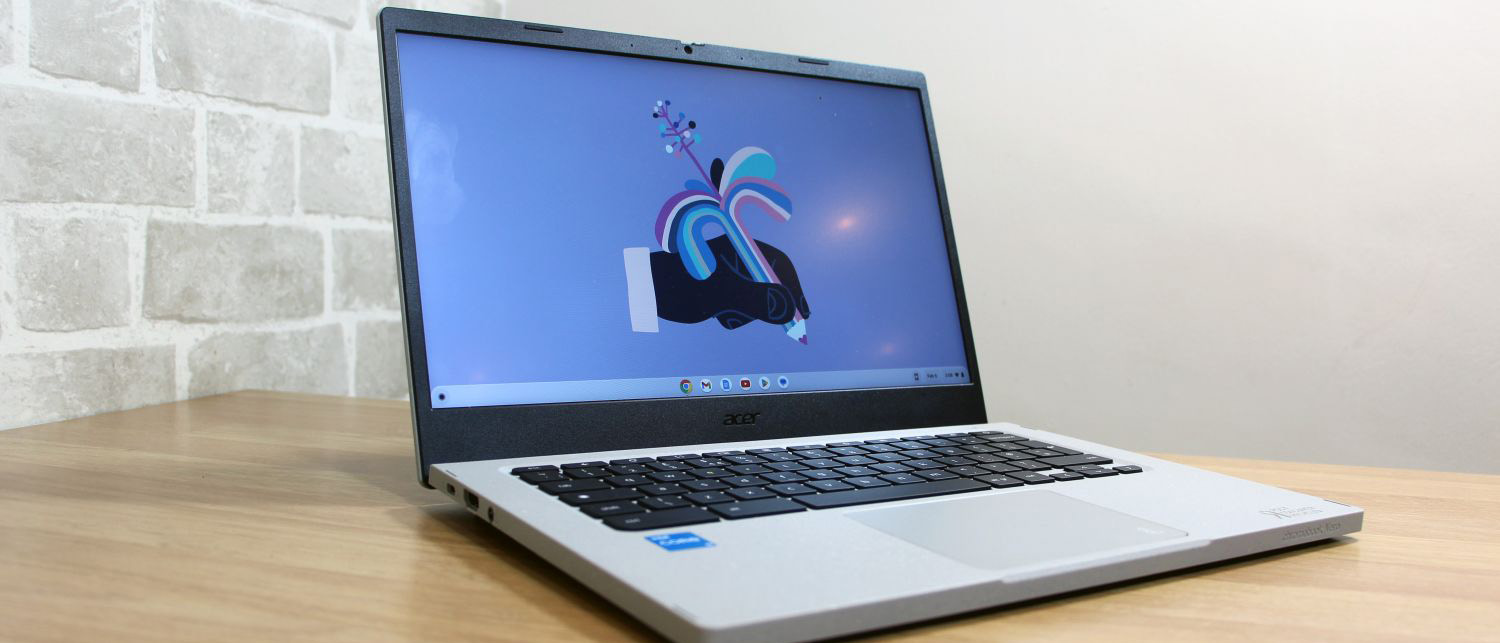
-
+
Fast Intel 12th Gen CPUs
-
+
Decent battery life
-
+
Satisfying keyboard and trackpad
-
-
Rivals are slimmer and lighter
-
-
Poor screen and speakers

A Google-powered portable is ideal if you work in a web browser, and a laptop like the Acer Chromebook Vero 514 looks perfect if you want a ChromeOS notebook that won't cost the earth. It'll also help the earth a little bit because a decent portion of this machine and most of its packaging is built using recycled material.
Beyond the solid slate of planet-friendly features, you'll find a 12th Gen Intel processor and a 1080p display, and the £416 exc VAT price undercuts lots of other Chromebooks too. There's no shortage of competition out there, though, from the slick Lenovo IdeaPad Duet 5 and the affordable Acer Chromebook Spin 513 to the pricier and faster Acer Chromebook Spin 713.
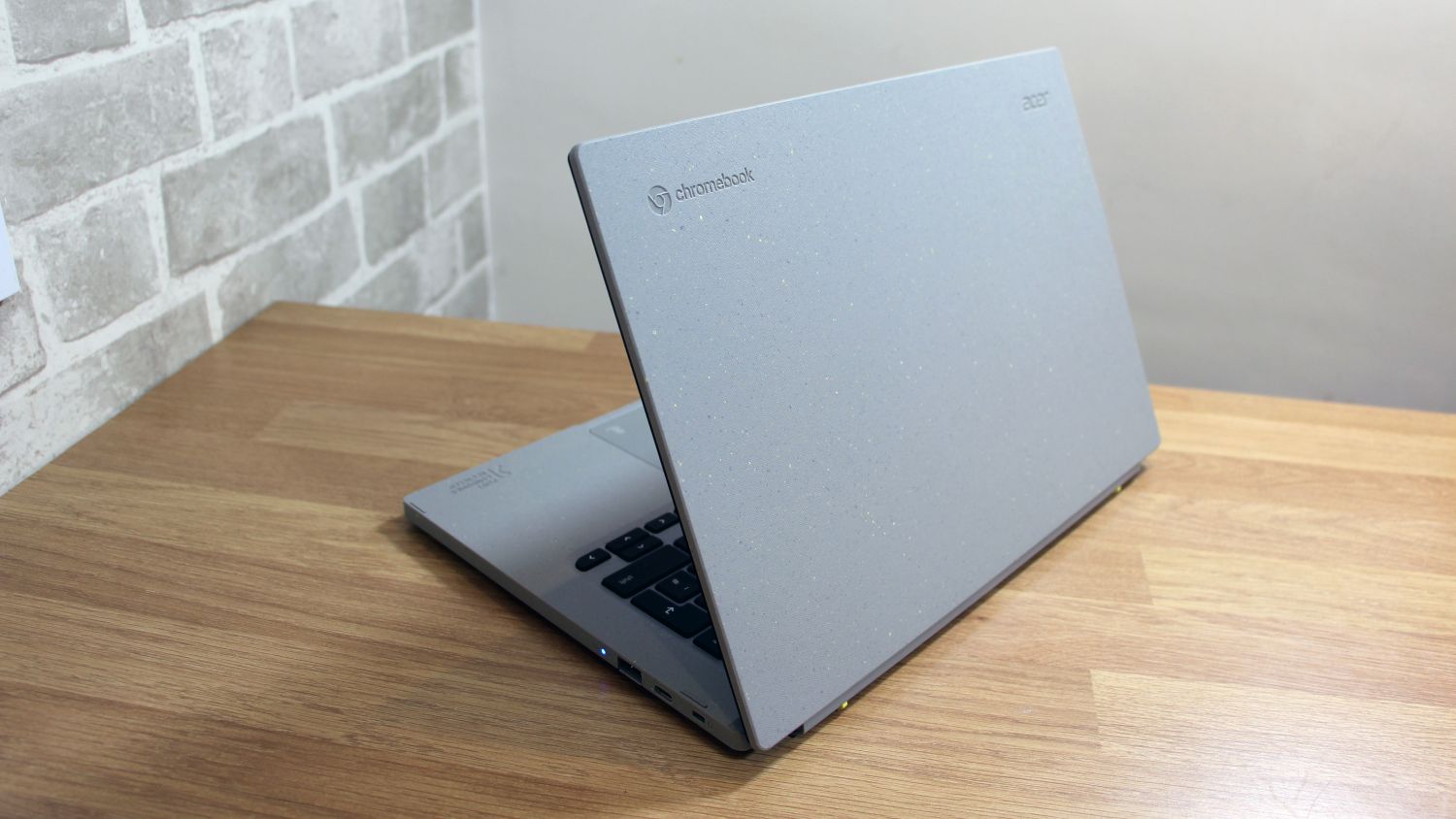

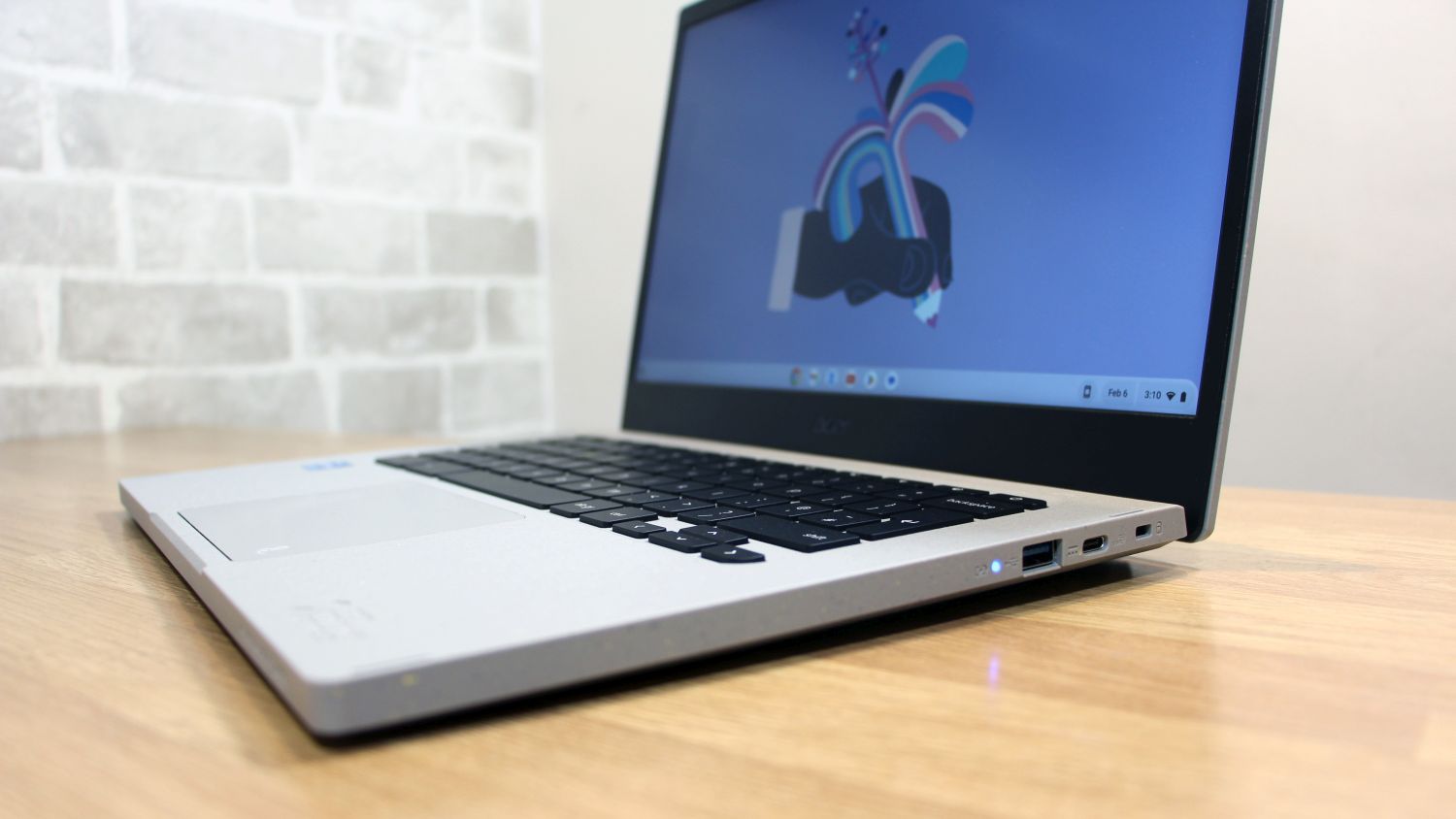
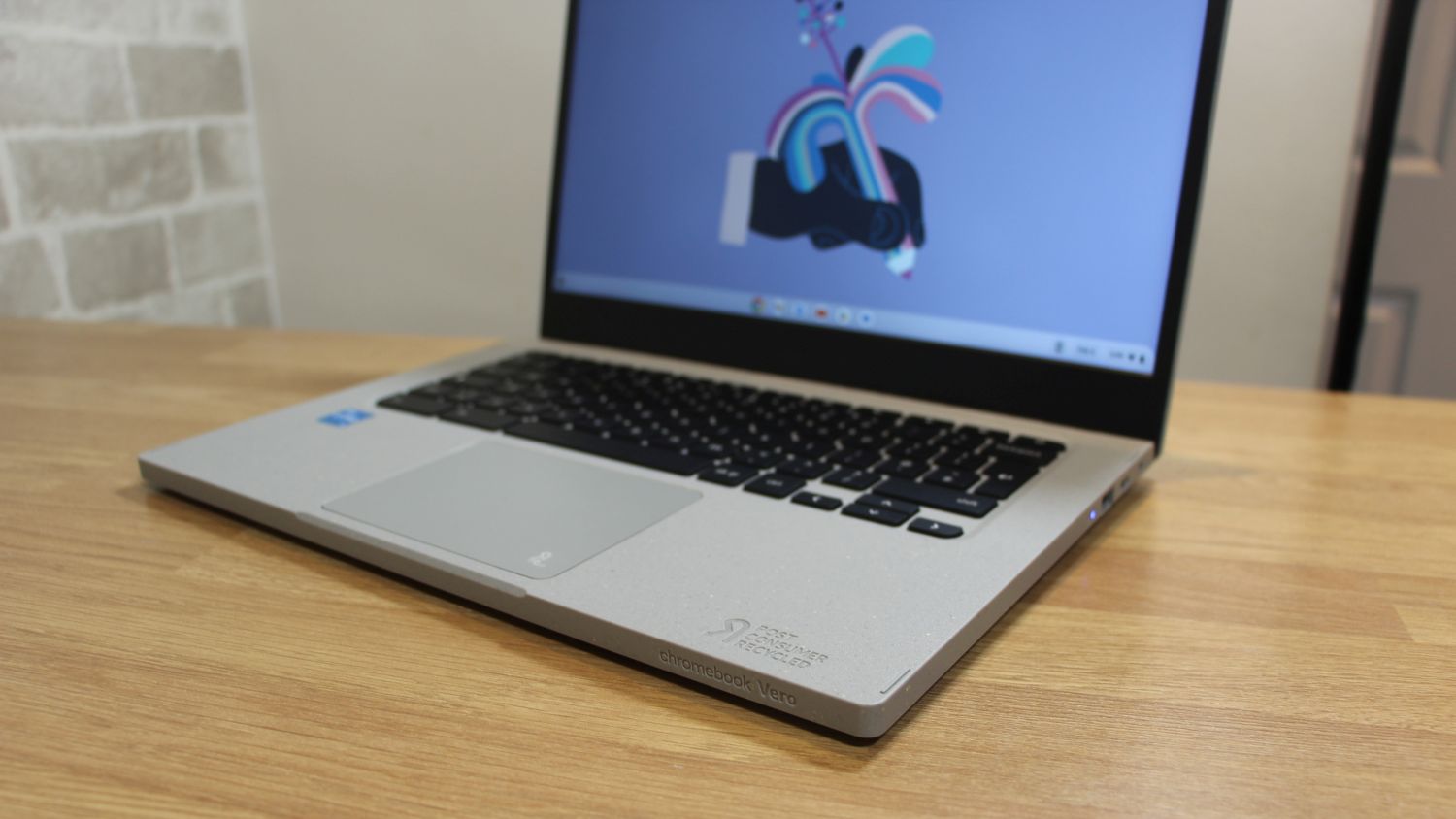
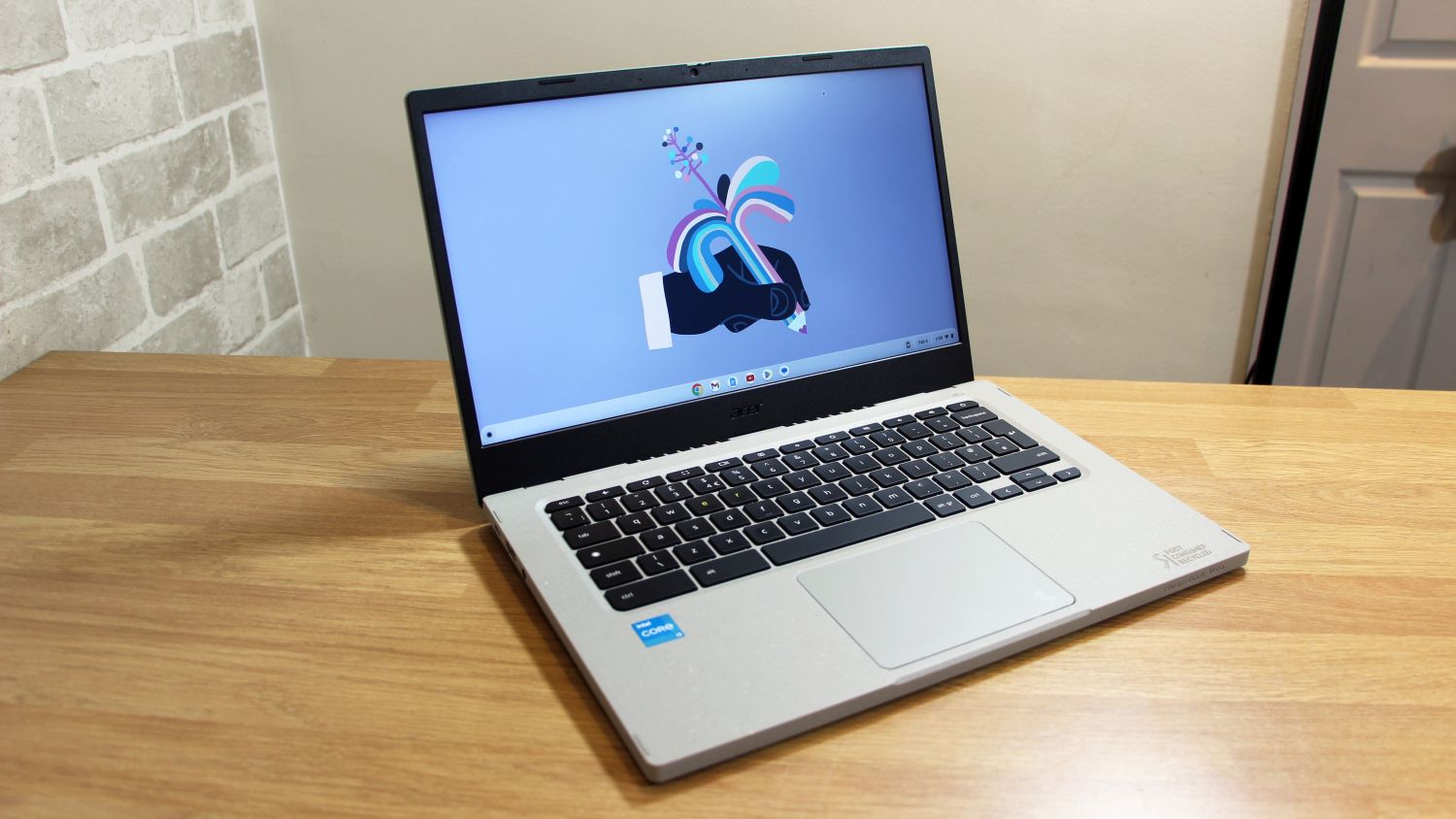
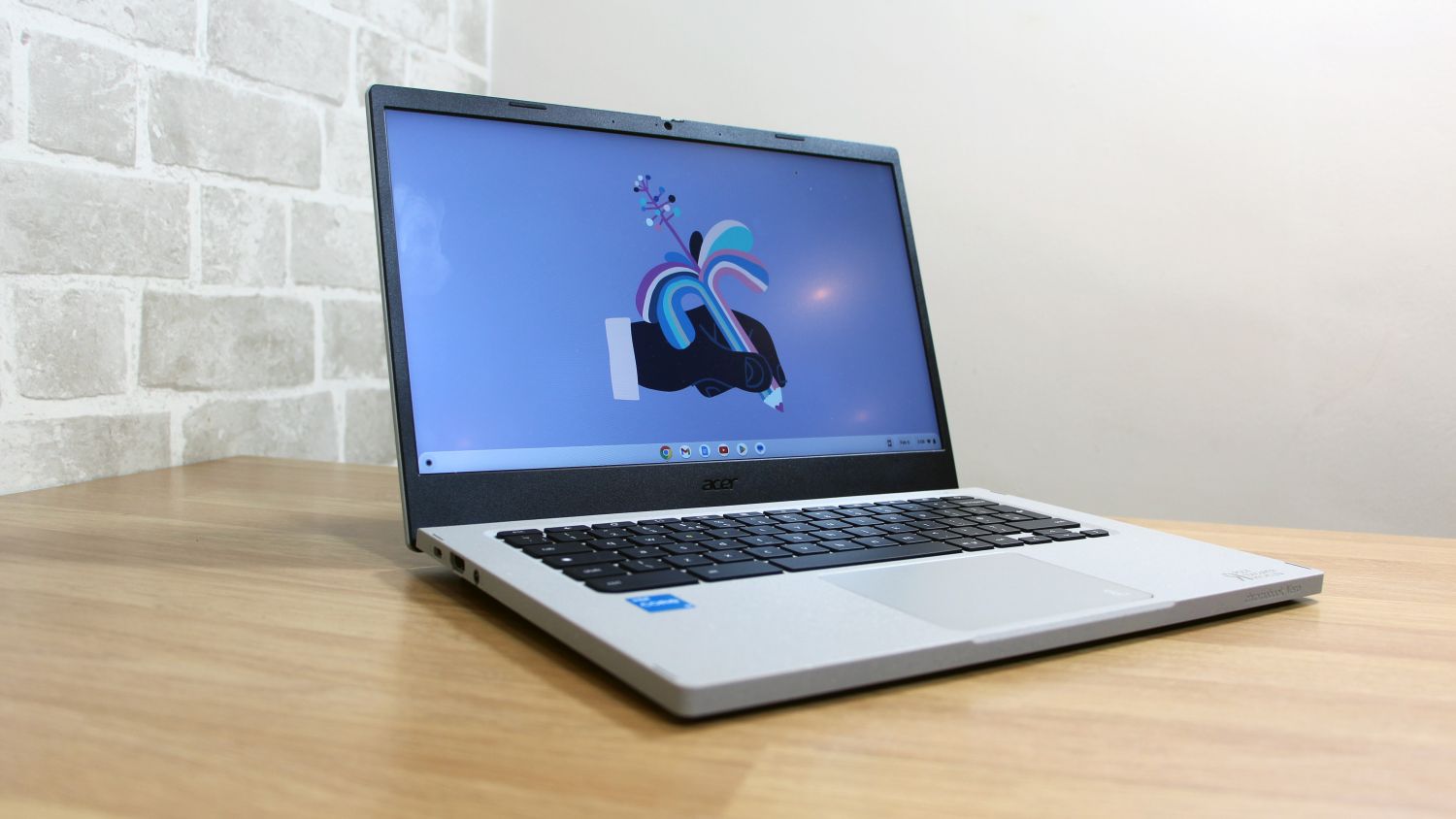
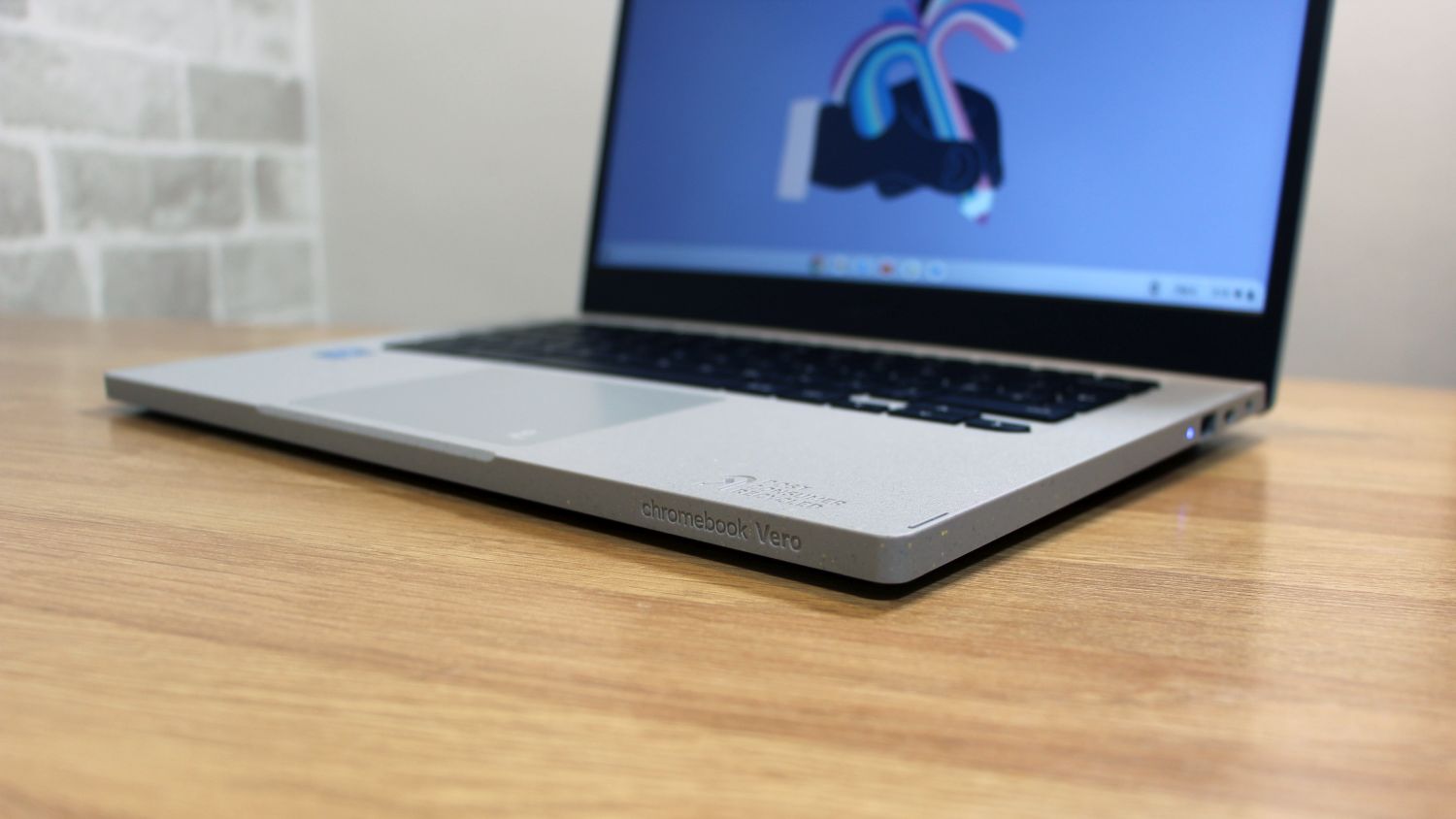

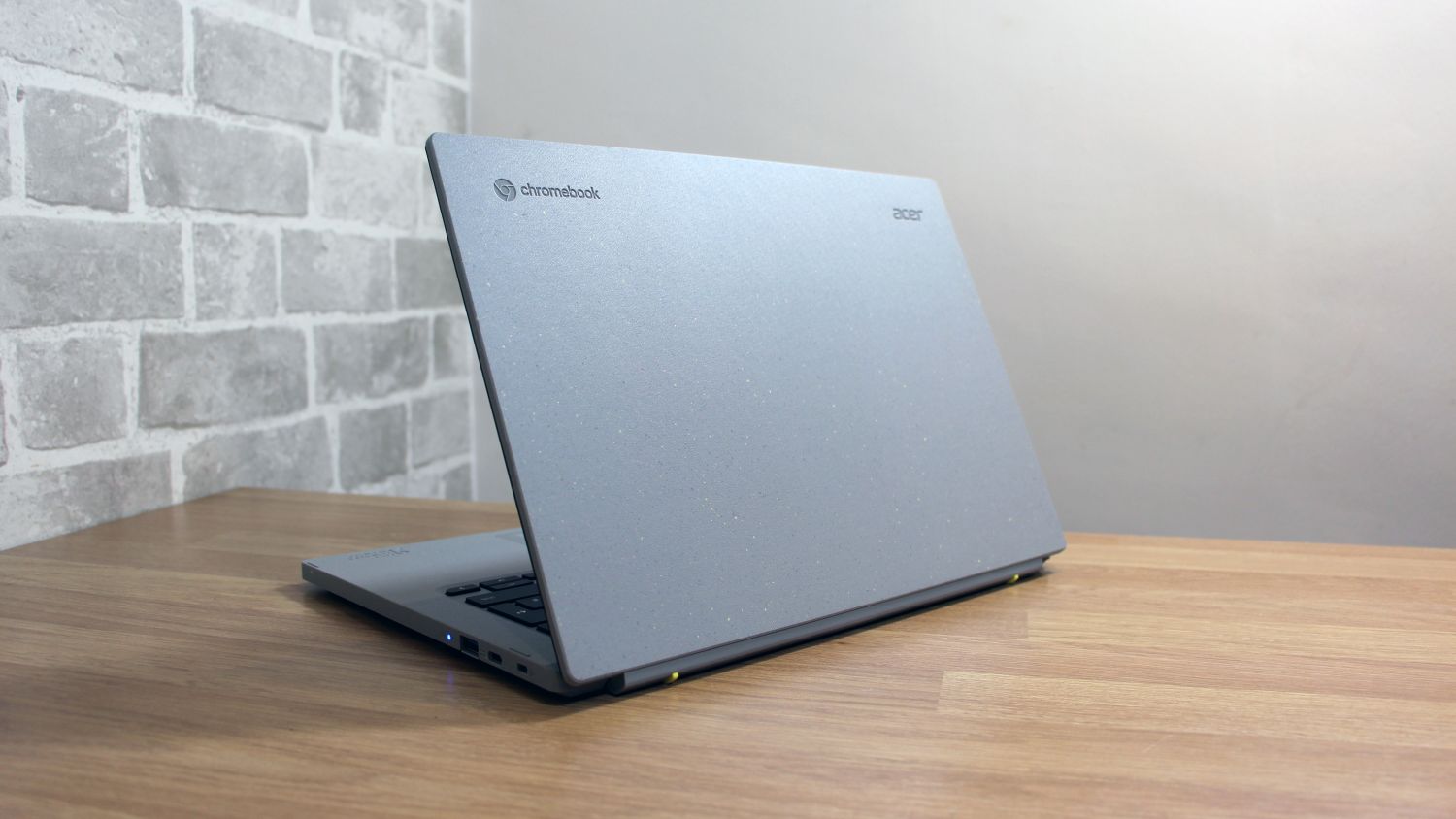
Acer Chromebook Vero 514 review: Design
The Vero's chassis uses 30% recycled material, with that figure rising to 50% in the keyboard and speakers. The touchpad's recycled plastic replicates a traditional glass unit, and 90% of the packaging uses recycled material – and the box also converts into a laptop stand.
There are some less obvious areas where Acer touts this machine's sustainability. The rig's MIL-STD-810H testing means that the Vero can withstand different temperatures, water and dust ingress, rusting, shocks and vibrations, so the Acer should last longer before replacement is needed. And, true to form, this is a very sturdy laptop. You won't find any paint on the exterior, because paint sometimes contains harmful substances. Instead, the Vero's grey plastic has yellow flecks and is reminiscent of concrete. It's not ugly, but it's certainly different.
In some areas, though, the eco credentials feel lacklustre. In the past, Acer has said that some Vero laptops use 21% less C02 in their chassis construction when compared to typical machines – that statistic is missing here. Also missing is a stat about how much of the screen uses recycled material. Previous Vero notebooks have avoided using plastic stickers, but they're present here. And while other notebooks have made upgrading easy this Chromebook has soldered memory.

This isn't the only eco-friendly laptop around, either. Apple's rigs are more expensive than the Vero 514 but the firm has used 100% recycled aluminium since 2018 and Apple has committed to being entirely carbon neutral by 2030 – five years earlier than Acer. Many HP laptops use a higher percentage of recycled material, and Lenovo builds ThinkPads with 75% recycled aluminium.
More eco-friendly laptops are welcome, and the Vero does reasonably well – but this particular Vero could be better, and Acer is not the only company making environmental moves. Beyond the green credentials, the Acer's only weakness comes from its physical measurements. At 1.4kg in weight and 21mm thick this is a chunky notebook – the Duet weighs just over 1kg and is slimmer, and both Chromebook Spin models are flimsier than the Vero but slimmer and lighter. It won't weigh you down, but the extra heft is noticeable.
Sign up today and you will receive a free copy of our Future Focus 2025 report - the leading guidance on AI, cybersecurity and other IT challenges as per 700+ senior executives
Acer Chromebook Vero 514 review: Keyboard and trackpad
The impressive build quality translates to the keyboard. The buttons are consistent and snappy, balancing robust typing and the light feeling required for long workdays. It's a high-quality unit. Its layout is fine, too – most of the Function keys and supplementary buttons are pretty big and there's a decent backlight. There's no numberpad, which is normal for a smaller notebook, and the Power button is installed on the keyboard. Unsurprisingly, this keyboard is miles better than anything you'll find on any rival.
Acer's tactile typing gear sits above a superb trackpad. The recycled plastic feels just as slick and accurate as any glass unit, and its fast-clicking action is a top-notch bit of design that makes navigating ChromeOS easier.
Acer Chromebook Vero 514 review: Display
The Vero's 14in panel has a 1920 x 1080 resolution, which is fine for everyday browsing and working. Its 16:9 aspect ratio does see it fall behind 16:10 notebooks that offer more vertical space, though, and it's not a touchscreen. The mediocre specification is joined by mediocre performance. The brightness level of 252cd/m2 is only good enough for indoor use, and the sRGB coverage level of 58.7% is average and not broad enough to handle creative workloads. The Delta E of 5.21 is wayward, too, which means that colours lose accuracy compared to professional panels. Unsurprisingly, the screen can't handle the Adobe RGB and DCI-P3 colour spaces.
The Vero's best attribute is its contrast ratio of 1,096:1. That decent figure gives the laptop enough punch to make websites and office apps look fine, but that's the limit of this screen's abilities – it's certainly not got the clout for any creative workloads and TV shows don't look too lively.

The mediocre display is paired with poor downward-firing speakers. They're loud enough to fill a room, but they're tinny, with harsh-sounding treble noises and no bass. They're acceptable for social media and video calls, but use headphones or a Bluetooth speaker if you want to enjoy audio. Every rival has a better screen than the Vero – both Chromebook Spin rigs have better colours and brightness and the 713 has a higher resolution, while the Lenovo has a stonking OLED display.
Acer Chromebook Vero 514 review: Hardware and performance
Acer's rig gains ground in benchmarks. The Vero deploys an Intel Core i3-1215U with two Hyper-Threaded performance cores and a 4.4GHz top speed alongside four Efficiency cores, 8GB of DDR4 memory and a 128GB SSD. And while that spec won't break records, it's easily ahead of competitors.
In Geekbench 5's single- and multi-core tests the Acer returned scores of 1,456 and 4,962. Those scores are several times faster than the Qualcomm Snapdragon 7c found inside the IdeaPad and Chromebook Spin 513. The Chromebook Spin 713 now uses Intel 11th Gen CPUs, but the Vero 514's chips are a bit quicker than all of those, too.
Different benchmarks only bolster the Acer's speed. Its JetStream 2 score of 213 remains several times faster than the Qualcomm chip, and its Kraken JavaScript speed of 490.1ms is nearly four times as quick. The Core i3 processor will handle loads of browser tabs, and it'll scythe through Office apps and everyday multi-tasking. You'll only start to struggle in content creation apps. If that's a concern, the Core i5-1235U version of this rig costs £583 exc VAT and a Core i7-1255U rig sits at £666 exc VAT. That Core i5 model will handle photo-editing and a huge number of browser tabs, while the Core i7 model is ideal for video-editing work and tougher creative apps.
Significant performance gains will only come from Windows machines, but you'll only get a decent jump if you spend more and accept that your new laptop will be larger and heavier than the Chromebook. There are no thermal issues here, and battery life is good: in a video playback test with aeroplane mode enabled the Vero lasted for 12hrs 37mins, and it managed nearly ten hours of usage in a work test with the display brightness ramped up. In virtually every situation you'll make it through a full workday.
Acer Chromebook Vero 514 review: Ports and features
The Vero's right-hand edge has a USB 3.2 Gen 2 port alongside a Type-C connection. There's another Type-C port on the left alongside an HDMI output, but one USB-C port charges the Vero. Above the display there's a crisp 1080p webcam with a privacy shutter, and internally the Vero deploys Wi-Fi 6E and Bluetooth 5.2 but no wired internet.

It's a reasonable selection of features, and it competes well with some rivals – the Spin 513 and Lenovo fall behind in networking. The Spin 713 is the clear leader here, though – it's got a card reader, fingerprint reader and Thunderbolt, and you won't find any of that on the Vero 514.
Acer Chromebook Vero 514 review: Verdict
There's no doubt that the Acer Chromebook Vero 514 doesn't tick every box, thanks to its mediocre connectivity and underwhelming display. It fights back elsewhere, though. Its 12th Gen Intel processors make it one of the fastest Chromebooks around, its keyboard and trackpad are satisfying, and it's got all-day battery life. And while it's not the only green laptop on the market, it's welcome if you'd like your tech to be environmentally conscious.
The price is often right, too. The Core i3, Core i5 and Core i7 versions of the Vero cost £416 exc VAT, £583 exc VAT and £666 exc VAT. The Lenovo costs £456 exc VAT but it's miles slower, and the Chromebook Spin 513 only costs £249 but it's slower and flimsier than the Vero too. The Spin 713 offers better connectivity and a superior screen, but its Core i3, i5 and i7 rigs are pricier than the Vero and you lose processing grunt.
The Acer Chromebook Vero 514 is fast, robust and will last all day, and its ergonomics make it satisfying to use. It doesn't have a high-end touchscreen or hybrid design, but it's a great choice if you want an affordable and capable everyday ChromeOS machine.
Acer Chromebook Vero 514 Specifications
| Processor | 1.2GHz Intel Core i3-1215U |
| RAM | 8GB DDR4 |
| Graphics | Intel Iris Xe |
| Storage | 128GB SSD |
| Display | 14in 1920 x 1080 IPS |
| Operating system | ChromeOS |
| Connectivity | Dual-band 802.11ax WiFi, Bluetooth 5.2 |
| Ports | 1 x USB 3.2 Gen 2, 2 x USB 3.2 Gen 2 Type-C, 1 x HDMI, 1 x audio |
| Dimensions | 313 x 224 x 21mm (WxDxH) |
| Weight | 1.4kg |
| Warranty | 1yr RTB |
Mike Jennings has worked as a technology journalist for more than a decade and has been fascinated by computers since childhood, when he spent far too long building terrible websites. He loves desktop PCs, components, laptops and anything to do with the latest hardware.
Mike worked as a staff writer at PC Pro magazine in London for seven years, and during that time wrote for a variety of other tech titles, including Custom PC, Micro Mart and Computer Shopper. Since 2013, he’s been a freelance tech writer, and writes regularly for titles like Wired, TechRadar, Stuff, TechSpot, IT Pro, TrustedReviews and TechAdvisor. He still loves tech and covers everything from the latest business hardware and software to high-end gaming gear, and you’ll find him on plenty of sites writing reviews, features and guides on a vast range of topics.
You can email Mike at mike@mike-jennings.net, or find him on Twitter at @mikejjennings
-
 CISPE claims European Commission gave Broadcom a ‘blank cheque to raise prices, lock-in, and squeeze customers’ with VMware deal
CISPE claims European Commission gave Broadcom a ‘blank cheque to raise prices, lock-in, and squeeze customers’ with VMware dealNews Cloud providers have issued a formal response to the General Court of the European Union after the Commission defended its approval of the deal
By Emma Woollacott Published
-
 Nutanix wants to help customers shore up cloud sovereignty
Nutanix wants to help customers shore up cloud sovereigntyNews New automation tools and infrastructure management capabilities look to tackle single-vendor dependency and shore up sovereignty requirements
By Ross Kelly Published
-
 The NCSC touts honeypots and ‘cyber deception’ tactics as the key to combating hackers — but they could ‘lead to a false sense of security’
The NCSC touts honeypots and ‘cyber deception’ tactics as the key to combating hackers — but they could ‘lead to a false sense of security’News Trials to test the real-world effectiveness of cyber deception solutions have produced positive results so far
By Emma Woollacott Published
